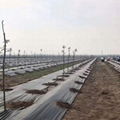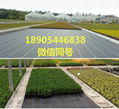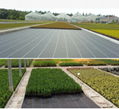| Model: | - |
|---|---|
| Brand: | Zheng Rui Plastic Industry |
| Origin: | Made In China |
| Category: | Agriculture & Foods / Gardening / Garden Tools & Equipment |
| Label: | Black grass proof cl , Antiaging grass clot , Gardening orchard |
| Price: |
US $0.13
/ sp
|
| Min. Order: | 500 sp |
| Last Online:21 Sep, 2019 |
Two, woven fabric specifications:
1, width: width is narrowest 60cm, width can reach 6 meters, width can be customized according to needs.
2, length: 1m-1000m can be customized according to customer requirements.
3, g weight: the minimum can reach 80g, the highest can reach 400g.
4, color: mainly black and green, other colors can be customized.Advantages of gardening cloth covering technology
1, keep soil moisture
Water permeability is an important technical indicator of gardening cloth. It refers to the amount of water per unit time per unit area, reflecting the ability of the ground cloth through the surface water, and the ground cloth applied to the orchard usually requires the permeable rate of more than 5 L / (S. M2). Similar to non-woven fabric, ground cloth covers the vertical evaporation of soil moisture, transversely migration of water, increases the resistance of water evaporation, effectively inhibits the ineffective evaporation of soil moisture, and the inhibition effect increases with the increase of the height of non-woven fabric. Under the condition of Deng Jialin and so on, the soil moisture content of 5, 20 and 40 cm soil layer can be increased from 13% to 15% under the condition of no precipitation, and the effect of soil moisture conservation is equal. Mage studies showed that the soil cover not only controlled weeds, but also reduced soil evaporation and soil moisture.
2, improve the utilization of nutrient
After laying the gardening cloth, the soil moisture of the tree tray was maintained, the surface area of the root system increased, and the nutrient absorption capacity increased. The nutrient utilization rate, nutrient content, and cost increase and income of the soil in the sweet cherry orchard after laying black ground were studied by Yin. The results of 5 years experiment showed that the nutrient elements of plant N, P, K, Ca, Mg, B, Zn, Mn and Cu increased significantly. Therefore, it is necessary to increase the supply of fertilizers to cover the plant to ensure rapid vegetative growth.
3, increase the yield of fruit
After gardening of orchard, the soil moisture is guaranteed, and the nutrient utilization rate is also greatly improved, and the fruit yield will increase. Gardening cloth significantly increased the yield of Greek basil, rosemary, and Brassica oleracea and Brassica oleracea. A 6 year study in the apple orchard of western Canada showed that the content of nutrient elements in the leaves varied with the growing season, and the tree potential and yield were higher than that of unlaid ground cloth. This is consistent with the British experiment in apple orchard.
4, control orchard weeds
Black gardening can prevent direct sunlight from the ground, and its solid structure prevents weeds from passing through the ground cloth, thus ensuring the inhibitory effect of the ground cloth on the growth of weeds. Especially in the hilly and hilly orchard, the ground is uneven and the stone is more, the film, the grass and the artificial weeding are difficult to realize, and the horticultural cloth has a great advantage to control the weeds. Many studies have shown that laying black gardening cloth in the orchard almost completely controls weed growth, and is more advantageous than other chemical or non chemical weeding methods.
5, prevention of soil and water loss
Soil nitrogen, especially organic nitrogen loss, is actually the result of interaction between slope runoff and soil nitrogen. Mountain Orchard with large slope is easy to form surface runoff under the scouring of rainwater, causing serious soil erosion and nitrogen loss. However, soil erosion is greatly reduced due to root fixation because of high vegetation coverage. By planting gardening cloth, we can avoid direct erosion of rainwater to soil, maintain soil and water, prevent nitrogen loss, and protect the ecological environment.








